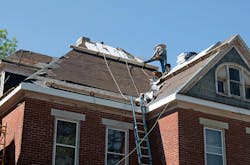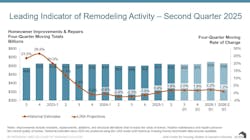Slower Growth Projected for Remodeling Sector into 2026
Annual expenditures for improvements and maintenance to owner-occupied homes are expected to soften in 2026, according to the newest Leading Indicator of Remodeling Activity (LIRA) released today by the Remodeling Futures Program at the Joint Center for Housing Studies of Harvard University. The LIRA projects that year-over-year spending for home renovation and repair will increase by just 1.2% by the second quarter of 2026.
“Weakness in the current housing market is expected to have a dampening effect on home improvement spending,” says Rachel Bogardus Drew, director of the Remodeling Futures Program. “Slowing construction starts and remodeling permitting activity, which are key factors in predicting future remodeling expenditures, are also putting downward pressure on home improvement growth.”
“It will be important to keep an eye on whether the housing market shows any sign of rebound in the second half of the year, to assess if this slowdown is the beginning of a more significant downturn,” says Chris Herbert, managing director of the Center. “However, federal cuts to incentives for home energy improvements could spur an increase in remodeling activity in the short term, as homeowners seek to take advantage of programs before they disappear.”
The LIRA provides a short-term outlook of national home improvement and repair spending to owner-occupied homes. The indicator, measured as an annual rate-of-change of its components, is designed to project the annual rate of change in spending for the current quarter and subsequent four quarters, and is intended to help identify future turning points in the business cycle of the home improvement and repair industry.

